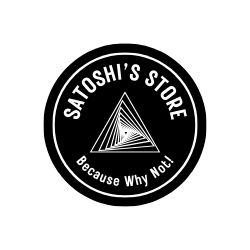If you’ve been paying more for your morning cup of coffee lately, there’s a new reason: the 10% coffee tariff recently introduced in the United States. This import tax affects coffee beans sourced from some of the world’s biggest producers, including Brazil, Ethiopia, and Colombia.
The ripple effect? Higher costs for roasters, importers, cafés, and—ultimately—you, the coffee drinker.
Let’s break down what this means for U.S. businesses, global suppliers, and anyone who depends on that daily brew.
How the 10% Coffee Tariff Raises Consumer Prices
The most immediate impact of the 10% coffee tariff is felt at the checkout. Whether you buy your beans in bulk or grab a daily latte, your costs are climbing. Why? Because importers are now paying more per pound—and those costs are passed straight to retailers and consumers.
In fact, some cafes are already raising prices by 5–15% depending on bean origin. Others are shrinking portions, adjusting loyalty programs, or dropping certain blends altogether.
Furthermore, U.S. grocery chains are responding by adjusting pricing tiers and offering fewer promotional sales. For this reason, even at-home coffee drinkers are starting to feel the squeeze.
How the Tariff Disrupts Coffee Roasters and Importers
Smaller roasters and regional importers are particularly exposed. Unlike large chains, they lack pricing leverage and may not have diversified supply chains. As a result, their margins are being hit hard.
Key pressures include:
- Increased bean costs from high-tariff countries
- Limited availability from tariff-exempt origins
- Pressure to renegotiate or cancel existing supplier contracts
- Rising shipping and insurance fees layered on top of the tariff
To stay afloat, many roasters are making rapid changes—including sourcing from new regions, adjusting roast profiles, or scaling back product lines.
In some cases, jobs and expansion plans are already on hold. While businesses are adapting, it’s clear that the 10% coffee tariff has shaken their operational models.
Which Countries Are Affected—and Who’s Exempt?
Not all exporting countries face the same tax. Some nations have been granted temporary exemptions, offering short-term relief for roasters who depend on those sources. However, these exemptions are unstable and could vanish without warning.
Tariff Status by Country:
- Facing 10% Tariff: Brazil, Colombia, Ethiopia
- Higher Tariffs: Vietnam (above 10%)
- Temporarily Exempt: Costa Rica, Kenya
Due to this shifting list, many buyers are hedging their bets, blending beans from multiple countries to reduce pricing volatility. Even so, the uncertainty makes long-term planning difficult.
The Problem with U.S. Coffee Production
The United States is almost entirely dependent on coffee imports. While there’s limited production in Hawaii and southern California, it doesn’t come close to meeting demand.
That’s why a 10% coffee tariff is so impactful—it raises prices across the board, regardless of where you buy your brew.
Some argue that this tariff could stimulate more domestic coffee production. However, with limited land, high labor costs, and unsuitable climates across much of the mainland, that’s unlikely to solve the supply problem.
Trade Disruptions Are Brewing
Coffee is more than a beverage; it’s a global trade commodity worth over $100 billion annually. Tariffs not only affect prices—they also alter long-standing trade relationships.
For example:
- Brazil and Colombia have voiced concern about the U.S. tariff’s effect on agricultural cooperation.
- Ethiopia risks losing export volume as U.S. roasters shift to exempt markets.
- Roasters fear retaliatory tariffs on U.S. exports like dairy, grains, and processed foods.
To make matters worse, global supply chains are already strained by rising fuel prices, shipping delays, and labor shortages. This tariff adds yet another burden to an already complex web of logistics.
It’s Not Just the Tariff—Other Pressures Are in Play
Even without the 10% tax, coffee prices were on the rise. Climate change is impacting growing conditions across Central and South America. Droughts, disease, and crop failure are becoming more common.
Meanwhile, global demand continues to rise, especially in growing middle-class markets like China, India, and the Gulf States.
Combined with the tariff, these forces are driving prices up—and keeping them there.
What’s Next for Coffee in the U.S.?
Most industry insiders don’t expect the tariff to go away soon. That means roasters and importers will need to get creative.
Possible adaptations include:
- Switching to new suppliers from exempt countries
- Streamlining packaging and roast options
- Offering more mid-tier blends instead of high-end, single-origin options
- Educating consumers about why prices are rising
For consumers, the takeaway is simple: expect to pay more—and expect less consistency in what’s available on shelves.
Final Pour: The Long-Term Outlook
The 10% coffee tariff has created a volatile environment for one of America’s most beloved beverages. From the farm to your favorite café, everyone in the supply chain is being forced to adjust.
Whether this tariff fulfills its economic goal remains to be seen. But what’s clear is that coffee in America is changing—price, taste, and availability included.
📊 Reports and Further Reading
- U.S. Tariff Schedule (HTS): https://hts.usitc.gov
- Visit our Shop! Product Reference: https://satoshialpha.com/product-category/wood-art-coffee-mug/
- External Shop: https://satoshialpha.etsy.com



